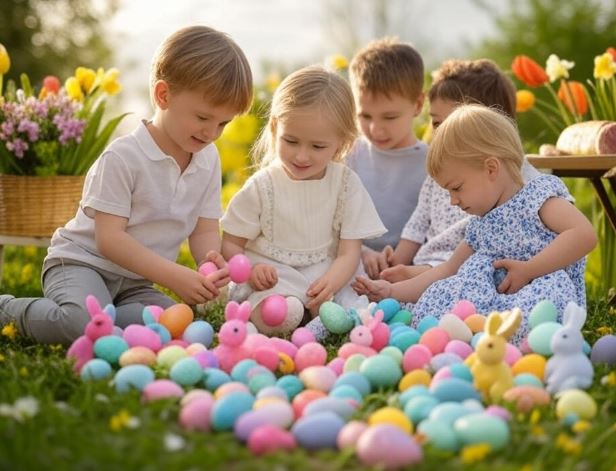Easter Sunday, celebrated on April 20, 2025, is a cornerstone of the Christian faith and one of the most widely observed holidays worldwide. Commemorating the resurrection of Jesus Christ, Easter symbolizes the triumph over death and serves as a foundation for Christian belief. Whether marked by solemn church services or festive egg hunts, the holiday blends sacred traditions with secular customs. Here’s what you need to know about Easter’s origins, meaning, and modern celebrations.
The Religious Significance of Easter
Easter marks the resurrection of Jesus Christ, believed to have occurred three days after his crucifixion by the Romans in 30 A.D. This event, central to Christian theology, is celebrated as the “triumph over death,” according to Nadieszda Kizenko, director of religious studies at the University at Albany. “Easter is the biggest day of all Christian holidays because it represents the foundation of faith,” she explains. The holiday concludes Holy Week, which honors the final days of Christ’s life, and follows Lent, a 40-day period of prayer and penance.
Also Read: Filipino Devotees Re-Enact Christ’s Crucifixion in Annual Holy Week Ritual
Easter’s date varies, falling on the first Sunday after the first full moon following the vernal equinox (March 20 or 21). This places it between March 22 and April 25, aligning with lunar and solar cycles used in early Christian calendars. In 2025, Easter coincides with April 20, a date also known as “4/20” for cannabis enthusiasts, creating an unusual cultural overlap.
‘Easter means the triumph over death’
Modern Easter Celebrations
Easter celebrations today range from deeply religious to joyfully secular. Many Christians attend church services, pray, or reflect on the resurrection’s spiritual significance. Others embrace family-friendly traditions like decorating eggs, hunting for Easter baskets, or posing with the Easter Bunny. These customs, while seemingly lighthearted, have ancient roots.
Eggs, symbolizing new life, trace back to pre-Christian fertility traditions in the Middle East, where people dyed them using onion skins. During Lent’s early days, Christians abstained from eggs, meat, and dairy, making eggs a cherished treat post-Lent. “Being able to eat eggs again was a big deal,” Kizenko notes, explaining the origins of egg-decorating customs. The Easter Bunny, a symbol of fertility and renewal, emerged from Pagan traditions and German folklore, arriving in the U.S. in the 18th century.
Why Easter Matters
Easter’s enduring appeal lies in its universal themes of renewal and hope. For Christians, it affirms the promise of eternal life, while secular celebrations emphasize springtime rebirth and family togetherness. From chocolate bunnies to intricately dyed eggs, the holiday bridges ancient rituals with modern joy, uniting millions in a shared celebration of life’s resilience.



